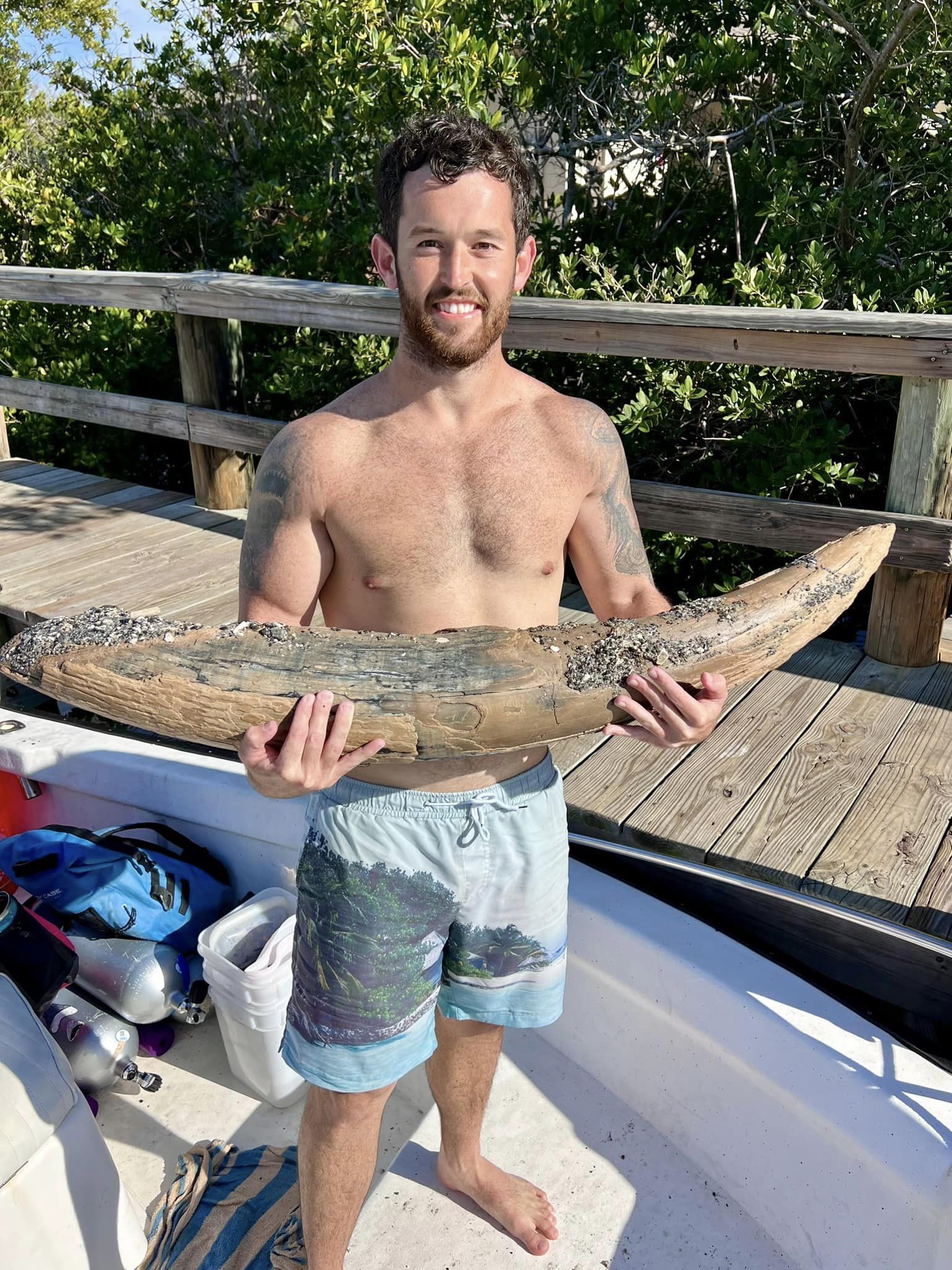While hunting for submerged fossils off the coast of Florida, a 29-year-old man discovered the huge tusk of a mastodon, a distant cousin of the woolly mammoth and modern-day elephants.
Alex Lundberg recovered the 1.2-meter (4-foot) tusk in April 2024 while exploring the waters off Venice Beach in the Gulf of Mexico. Upon diving, he noticed an intriguing object poking out of the seabed around 7.6 meters (25 feet) below the water surface.
“I look over, and I see what looks like a [15.2-cm] 6-inch piece of wood uncovered in the sand, and I swim over to it, and I started fanning it, trying to get the sand off of it. It just kept getting bigger and bigger,” Lundberg told USA Today.
“It was absolutely crazy,” he added.
It’s possible the find could be a mammoth tusk. However, based on its shape, he believes the specimen is most likely a mastodon tusk.

What a discovery!
Image courtesy of Alex Lundberg
Lundberg spends many of his weekends looking for fossils in Florida, where prehistoric shark teeth and shards of mammoth tusk are aplenty, but this latest tusk discovery is a favorite find so far. It’s not hard to see why, eh?
The discovery has been reported to the Florida Museum of Natural History, as required by local fossil hunting permits. If they don’t believe the find is scientifically significant, Lundberg should be able to keep it. And no, he isn’t planning on selling it.
Mastodons and mammoths share some superficial similarities – they are clearly relatives of elephants, with their impressive tusks and lengthy trunk – but they bear some clear differences and have distinct evolutionary histories.
Mastodons, which belonged to the genus Mammut, were shorter and stockier than mammoths with stumpier, straighter tusks. In contrast, most mammoths, members of Mammuthus genus, had larger, more elaborately curved tusks.
One of the key differences for paleontologists is their teeth, which vary quite significantly due to their diet; mastodons had cusp-shaped teeth for browsing woody vegetation such as leaves and twigs, while mammoths possessed flat, ridged molars ideal for grazing on grasses.
Both animals fell into extinction at the end of the last ice age around 14,000 to 10,000 years ago (except for a freak population of dwarf woolly mammoths that lived on Siberia’s Wrangel Island until about 4,000 years ago).
Fossilized remains of both genus have been found throughout North America especially along the Atlantic coast and south of the Great Lakes, not mention across vast swathes of Europe and Asia.
Source Link: Giant Prehistoric Mastodon Tusk Found By Amateur Fossil Hunter In Florida